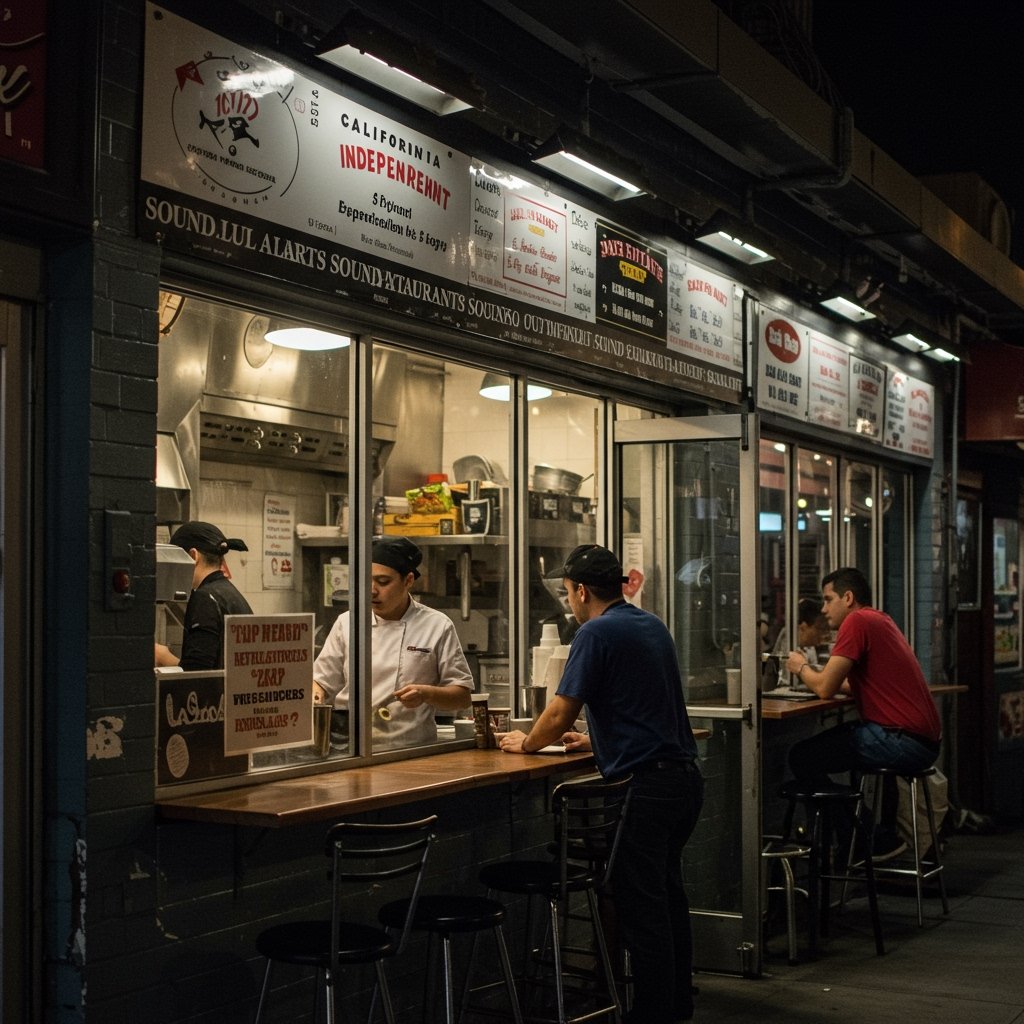Independent Restaurants Grapple With New Wage Mandate
As the effective date of California’s new fast-food minimum wage draws near, the focus of concern is shifting from large, publicly traded corporations to the state’s diverse landscape of independent restaurants. While initial reactions to the impending $20 per hour minimum wage, mandated by Assembly Bill 1228 (AB 1228) and set to take effect on April 1, largely centered on the strategies and statements of major fast-food chains, it is now the voices of independent operators that are gaining prominence. These small business owners, deeply embedded in their local communities, are expressing significant apprehension about their ability to absorb the substantial increase in labor costs.
The new wage floor, specifically applicable initially to employees of fast-food chains with 60 or more locations nationwide, is widely expected to create upward pressure on wages across the entire restaurant industry labor pool. Independent restaurants, competing for the same talent, anticipate needing to raise their own wages to remain competitive and retain staff, regardless of their size. This indirect but potent impact is at the heart of the worries currently circulating among proprietors of cafes, bistros, diners, and other non-chain eateries across California.
Navigating Economic Headwinds
Operators in cities as geographically and culturally diverse as Oakland in Northern California and San Diego in the south are intensely evaluating their operational strategies in light of the forthcoming change. The consensus among many is that simply maintaining the status quo is not a viable option. The spectrum of potential adjustments being considered or already planned includes difficult decisions aimed at offsetting the increased labor expenditure.
One frequently cited measure is the adjustment of menu prices. However, this approach is fraught with challenges. Independent restaurants often operate within competitive local markets where price sensitivity among consumers can be high. Significant price increases could lead to a decline in customer traffic, potentially negating the benefit of higher revenue per item. Finding the delicate balance between covering costs and remaining affordable is a critical tightrope independent owners must walk.
Another significant area being scrutinized is staffing and employee hours. To manage labor costs, some restaurants are exploring reductions in employee hours, consolidating shifts, or potentially delaying hiring for open positions. While intended as a cost-saving measure, this can impact employee morale, service quality, and the overall operational efficiency of the business. Independent restaurants often pride themselves on personalized service and a strong team dynamic, which could be strained by such adjustments.
Furthermore, many independent operators are reporting that planned investments and expansion initiatives are being put on hold. Opening new locations, undertaking significant renovations, or investing in new equipment often requires available capital and confidence in future profitability. The uncertainty and anticipated increase in operating expenses driven by the wage hike are causing many to delay or cancel these growth-oriented plans, impacting not only the business owner but also potential job creation and neighborhood development.
Disproportionate Impact on Small Businesses
The concerns voiced by independent restaurant owners are underscored by data highlighted by organizations like the Independent Restaurant Coalition. The Coalition has pointed out that while large national chains may possess greater resources, leverage, and scale to absorb or offset increased costs—through bulk purchasing, advanced technology adoption, or simply higher corporate profitability—small, independent businesses typically operate on much thinner margins. Labor costs often represent a significant percentage of an independent restaurant’s total expenses, and a mandated 25% increase from the state’s previous $16 minimum wage ($15.50 for smaller employers) specifically impacts this critical area.
The Coalition’s data suggests that the impact of such a substantial wage jump is disproportionately felt by these smaller entities. They may lack the capital for significant automation or the bargaining power to negotiate lower supplier costs that could help offset the rising labor expense. This disparity in ability to adapt raises serious questions about the long-term competitive landscape of the restaurant industry in California.
Fears of Closure vs. Cautious Optimization
While the predominant sentiment among independent operators appears to be one of deep concern and apprehension, the perspective is not uniformly bleak. A smaller segment of the independent restaurant community is approaching the challenge with a focus on operational efficiencies. These owners are looking for ways to streamline processes, reduce waste, optimize scheduling, and potentially invest in technology that can improve productivity without necessarily reducing staff numbers drastically.
Some hope that the wage increase could lead to a more stable and experienced workforce, potentially reducing turnover and training costs in the long run. A higher wage might attract more skilled applicants, which could enhance service quality and operational smoothness. However, this cautious optimism is often tempered by the stark reality of already tight profit margins.
The overarching fear among many independent restaurant owners is that, despite their best efforts to adjust through price increases, labor hour reductions, and efficiency gains, these measures will not be enough to maintain profitability. The margin for error in the independent restaurant business is typically very small. A sustained increase in costs that cannot be fully passed on or absorbed could easily push a business into unprofitability.
The ultimate consequence feared by many is the permanent closure of independent restaurants across the state. Such closures would not only represent the loss of individual businesses and livelihoods but also impact the unique culinary character and vibrancy of California’s diverse communities, which are often defined and enriched by their local, independent eateries. The coming months will be a critical test for these small businesses as they navigate the significant economic shifts brought about by the new $20 per hour minimum wage, effective April 1 under AB 1228.



















